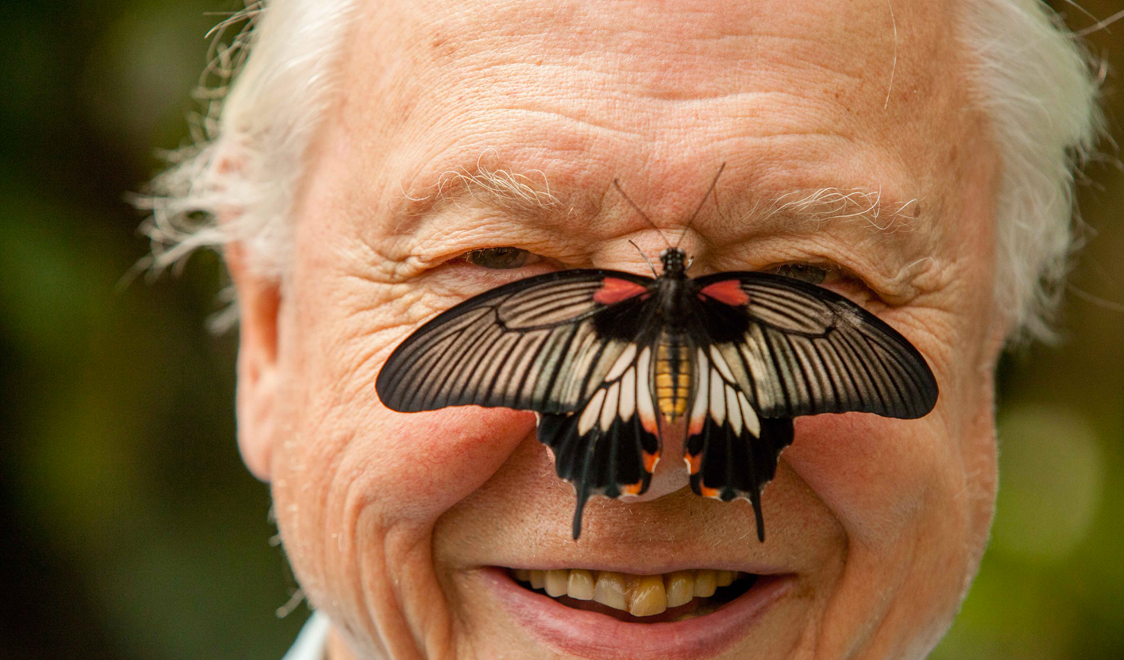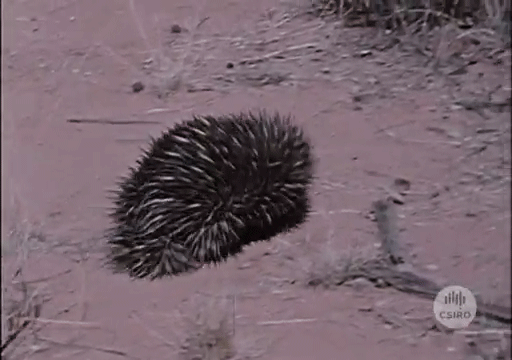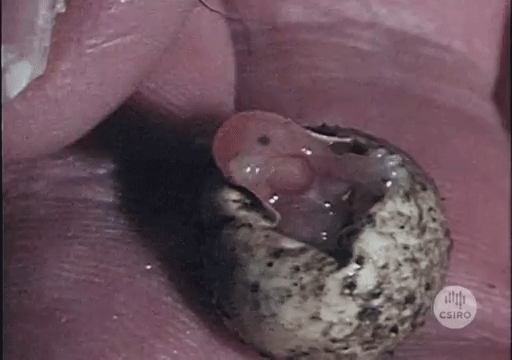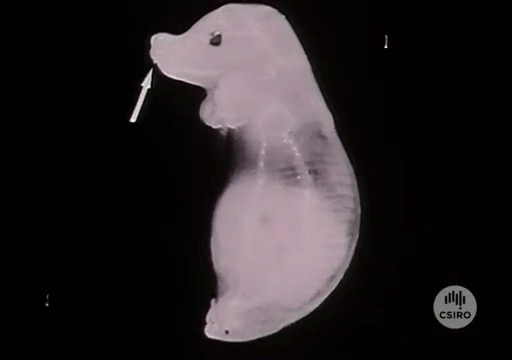
Oh, to be that close to the Sir.
The saying goes that if Sir David Attenborough says it, it must be true.
I may have made that one up, but I’m sure you’ll agree that the Sir commands a level of respect about all things in the natural world above any other living scientist. I would even go so far as to say that if the Sir gave me advice on my home loan or hair style, I’d probably take it.
So you can imagine our delight when, while watching the Sir’s ‘Rise of Animals’ last week, we saw footage from our film archives, dating back to the early 1970s. The Sir spends some time talking about echidnas, one of only two mammals that lay eggs (the other is the platypus). The soft, leathery egg is deposited into the pouch and hatches approximately 22 days later. Welcome to the world, little puggle.
This reproductive process is quite unique and, in the Sir’s words, ‘the hatching process itself has only rarely been captured on film’. So pleased are we to have been the ones to capture it.
If you’ve only got 10 seconds to spare you can watch our highly-anticipated GIF series of a puggle hatching below… or scroll right down for the full rare footage (all 1 minute, 3 seconds of it).


It’s ALIVE

The tiny, terrifying tooth
Get ready for the puggle in full hatching glory.
Our archive videos make for great viewing. If you loved watching a puggle hatch, then you’ll squeal with delight watching the slightly more grotesque ‘Birth of the red kangaroo‘. Or better yet subscribe to our YouTube channel where every Throwback Thursday we treat you to an archive classic.
***
PS. Before someone else points this out, I am well aware that echidnas don’t have teats. They have milk patches. Let’s be honest, saying ‘Patch time’ wouldn’t have made for such an interesting headline… so let’s just call it artistic licence.

